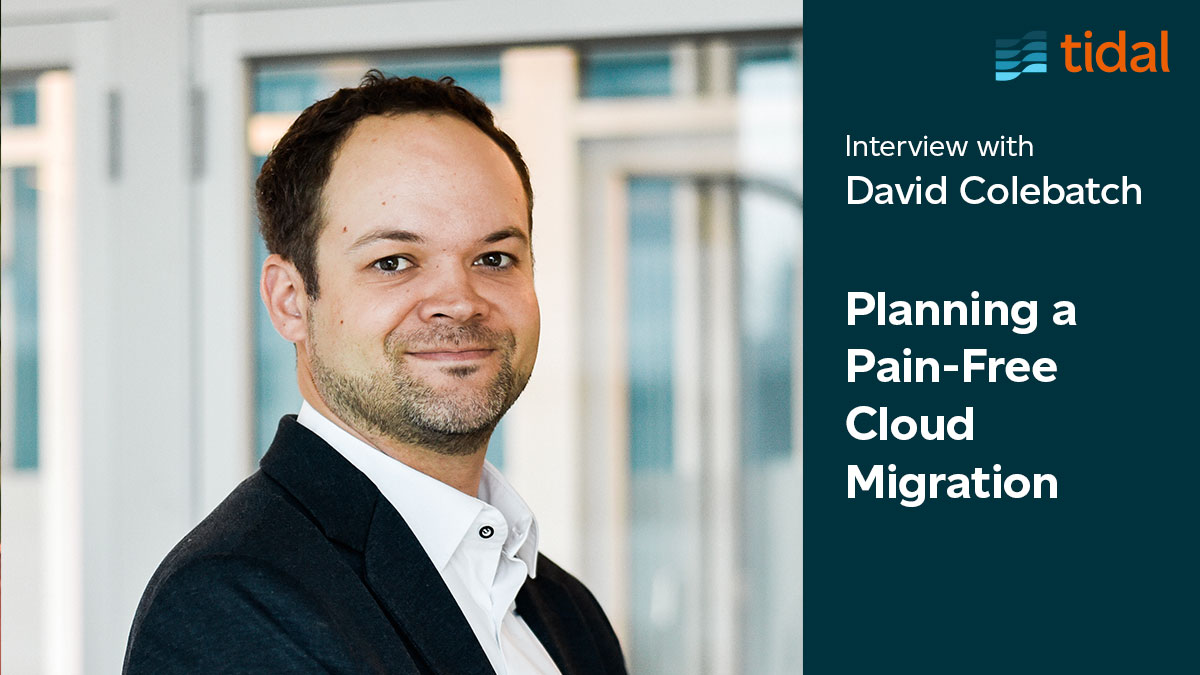Planning a Pain-Free Cloud Migration
Ever wonder how best to plan for a successful cloud migration? I sat down with David Colebatch, CEO / Chief Migration Hacker at Tidal to better understand what it takes to approach a cloud migration with confidence. David will help to demystify cloud migration planning and further change our perceptions of the cloud.
1. What’s the best way to begin planning a pain-free cloud Migration?
The first step in any cloud migration should be soliciting a clear vision statement from the project sponsor. We want to capture our organizational goals and targets right up front, as this clarity will allow migration teams to make decisions more quickly and remove a lot of the ambiguity and lack of empowerment issues we see in later stage projects.
2. Who should be involved in the planning?
Ensure the business is present, and it’s not only an IT project. Why? We often find IT second-guessing what the business wants, and how they would react to key decision points such as the extent to which applications could be changed or even the timeframes of migrations themselves.
You also need to involve cloud migration expertise. Someone who has done it before, and knows what is realistic in terms of timing and technology choices.
3. What are the key points to consider?
The key to a successful cloud migration? Accurate discovery of your applications and technology – no guesswork allowed.
To that end, start with a broad-brush approach then refine over time:
- Create your business case quickly using free tools like Tidal Calculator This helps you set strategic targets on what proportions of your applications should be transformed, vs lifted-and-shifted.
- Before creating “concrete plans”, perform a comprehensive application assessment using tidalcloud.com
This provides data-driven insights on how to migrate each application (no guesswork!) - Empower and enable a number of small migration teams to migrate application by application, in concert with the business. This is the capstone of pain-free migrations: business stakeholders are engaged, expectations are met or exceeded, and you’ve minimized surprises in late stages of migration.
4. What is the biggest mistake organizations make when planning a cloud migration?
The #1 biggest mistake we see is taking a solely infrastructure-centric approach to cloud migration. This prevents appropriate budgets from being created and limits the approaches teams will take to migrate to the cloud.
5. Is there anything else you would like to add?
I’d like to leave you with five “Signs of trouble” that you should look for in established projects:
- Unclear project vision or targets
- Cost or time overruns
- Prior failed migrations, with no new game plan
- (Another) Shiny new roadmap, but no progress
- Gold-plated cloud architectures, no adoption
You can learn how to address some of these in a recent 3–part OnDemand webinar series “Clarity-Driven Cloud Migration” here: webinars



